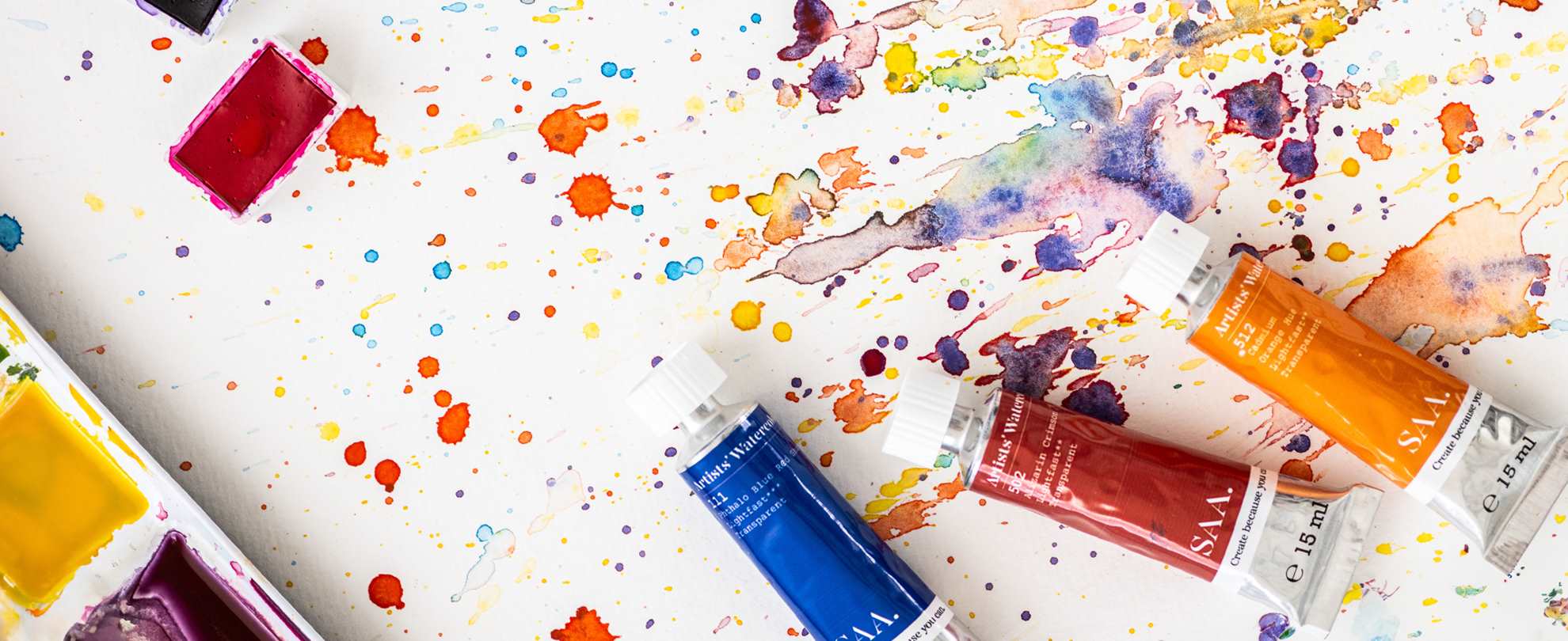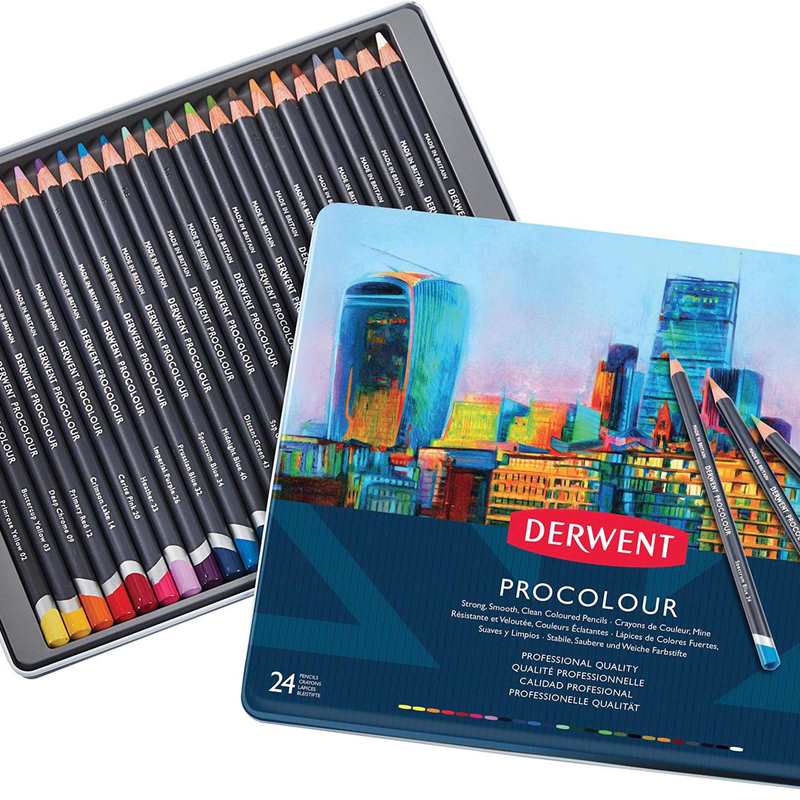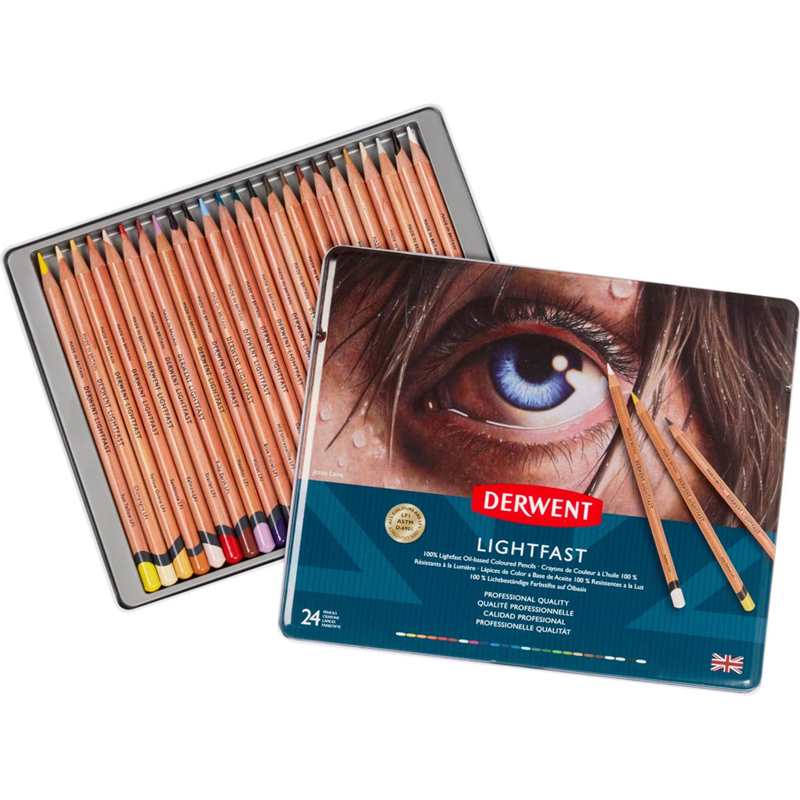

Derwent Coloured Pencils
Derwent Artists Pencils are the classic colour pencil, with an extensive range of 120 blendable colours. Providing the largest colour selection in the Derwent range, Artist pencils are extremely well suited to intricate detailed drawings such as botanical art, where colour accuracy is vital.
The slightly waxy texture is ideal for multiple layering and blending to produce an infinite spectrum of subtle hues and tints. Coloured pencil is a relatively new medium, not developed until the early 19th Century. But, even then, they were not seen as an artist medium by the art elite. It was not until the early 20th Century that manufacturing techniques, industrialisation, higher standards of pigment and quality meant the coloured pencil began to take its place in the art world, and it continues to develop today.
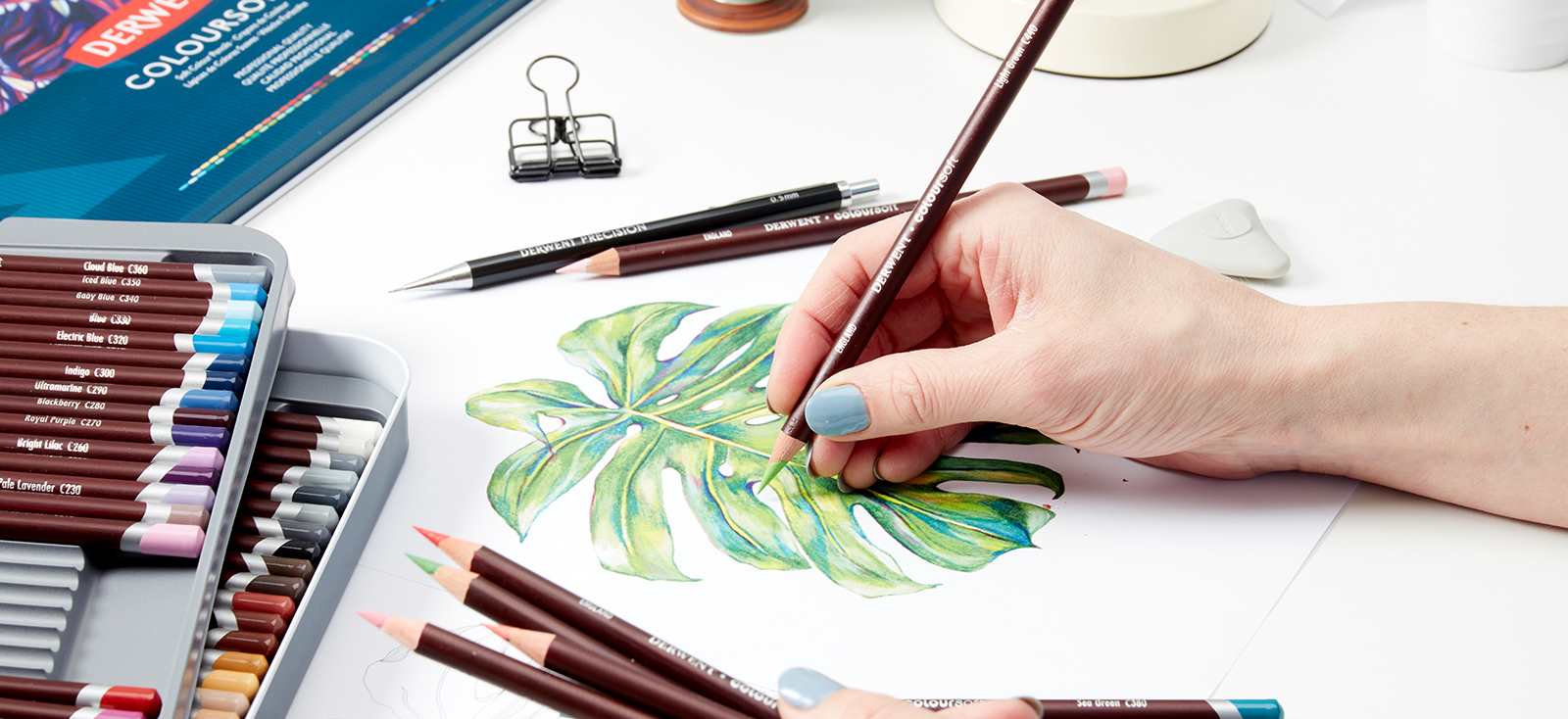

Wax core
As with other mediums they will also fall into artist or student grades. The artist quality pencil has a higher pigment to binder ratio, greater lightfast ratings and a stronger application of colour. Lightfast ratings for coloured pencils will vary within a range and from brand to brand, with some colours - like violet or magenta - being more susceptible to fading. Coloured pencils are recognised as wax core or oil core pencils and both these pencils have both oil and wax in the binder. However, oil-based pencils have a higher oil content and wax based higher wax content. There are differences between the pencils, but not big ones and they are able to be used together.
Wax-based coloured pencils are the most popular and least expensive. They are easier to erase and, depending on the range, can have soft cores - like Derwent Coloursoft - or hard cores - like the Derwent Artist range. The harder core pencils allow for finer detail as they will sharpen to a finer point, while the softer core allows for a quicker layering of colour, easier blending and burnishing. Wax bloom can occur with wax core colour pencils in heavy layers or with darker colours, as the wax in the binder comes to the top of the colour and creates a cloudy haze. Lighter layers - or using a spray fixative - will help avoid this issue.


Oil core
Oil core coloured pencils are the more expensive, with a harder core; but due to the composition of the binder they are less susceptible to breaking or crumbling than their wax counterparts. There is no wax build up, so there will be no wax bloom and they’re easier to smudge. Unlike watercolour pencils - which can be moved and blended with water - and soft pastel pencils – which can easily be smudged with a finger, water or blending tool - coloured pencils which are insoluble with water need a little more work to be blended.
The surface used will determine the pencil’s ability to blend, but they can be blended and softened using different methods, including: applying the pencil in gentle layers or varying the pressure, using a white or off-white colour pencil or using a blending tool like a paper stump or tortillon (tightly wrapped paper stick). Using a white pencil for blending will also lighten the colour, but you can use colourless blenders, which are available as pencils or solid sticks. They are essentially the binder without any colour and can be used to blend the colours and create rich, smooth, polished colours.
The oil-based and wax-based colour pencils are interchangeable, so you have a vast variety of colour and applications at your disposal. But once you’ve mastered this fantastic medium, the differences between the pencils are not vastly significant and you will soon find which type works for you.
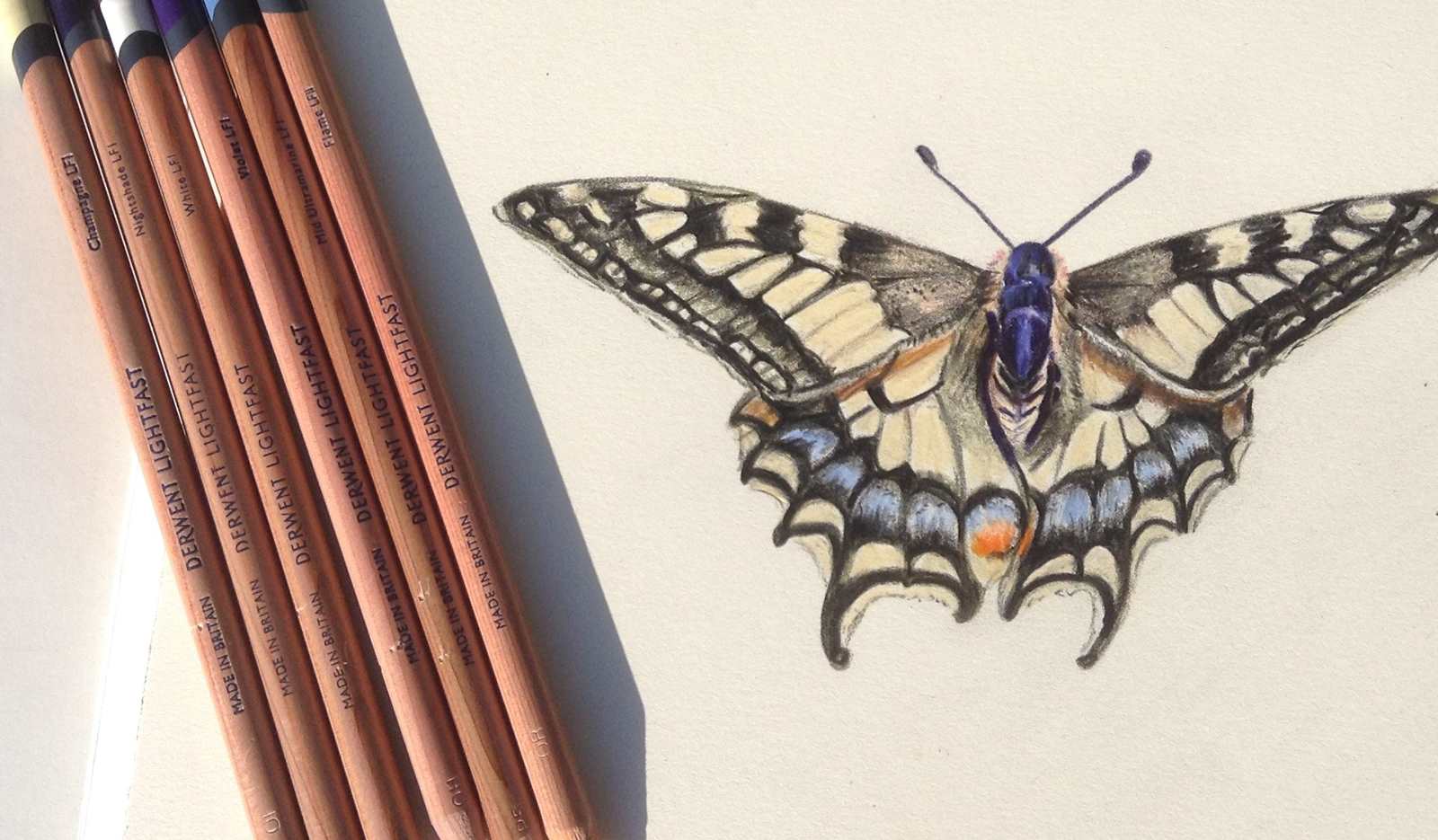
Wax core coloured pencils include:
Oil based coloured pencils include:
-
One of the best things about coloured pencils is that you can easily carry them around with you – and as an added bonus they’re one of the less messy mediums too. Don't spend a fortune on an expensive pencil set until you know coloured pencils are for you; all you really need to start with is a sketch book, a basic set of pencils and an eraser. There is no single range that will suit every coloured pencil artist. Working on various surfaces, different styles and preference will give different effects, so the choice is entirely your own. Cheaper pencils will fade over time so purchasing a set of quality pencils that are lightfast is the best option.
Popular ranges such as Faber-Castell Polychromos or Derwent are well worth investing in, but ensure the range is right for you by buying the black and white pencils first to test the texture, vibrancy and quality – the strength of tone offers a good indicator of quality and suitability for your needs. Professional coloured pencils are either wax, oil or water based, and are made up of different formulas using higher quality pigments and binders than are found in normal pencils. The colours are far more vibrant, richer and more lightfast than regular pencils and this makes them more resistant to fading over time.
-
It’s down to individual preference, but it is important that any surface you use is acid free, as over time a surface that contains acids will turn yellow and/or fade and deteriorate along with the artwork. Archival paper is something you should also look out for. Some of the most popular papers used by pencil artists are Fabriano, Legion Stonehenge and Strathmore Bristol Board, as well as Clairefontaine Pastelmat or Art Spectrum Colourfix, which are a favourite for those who like working with textured paper. The weight of the paper is also important, the higher the gsm (grams per square metre) the thicker the paper, allowing you to apply more layers without fear of damaging the surface.
-
It’s easier to work from light to dark and begin layering with a light application of colour applying a little more pressure on each consecutive layer. This avoids saturating your support paper too quickly which may leave your artwork looking flat and shiny. With coloured pencils you can create more colours by overlaying pencil tones, which is another reason why it’s not always necessary to buy the full range straightaway

